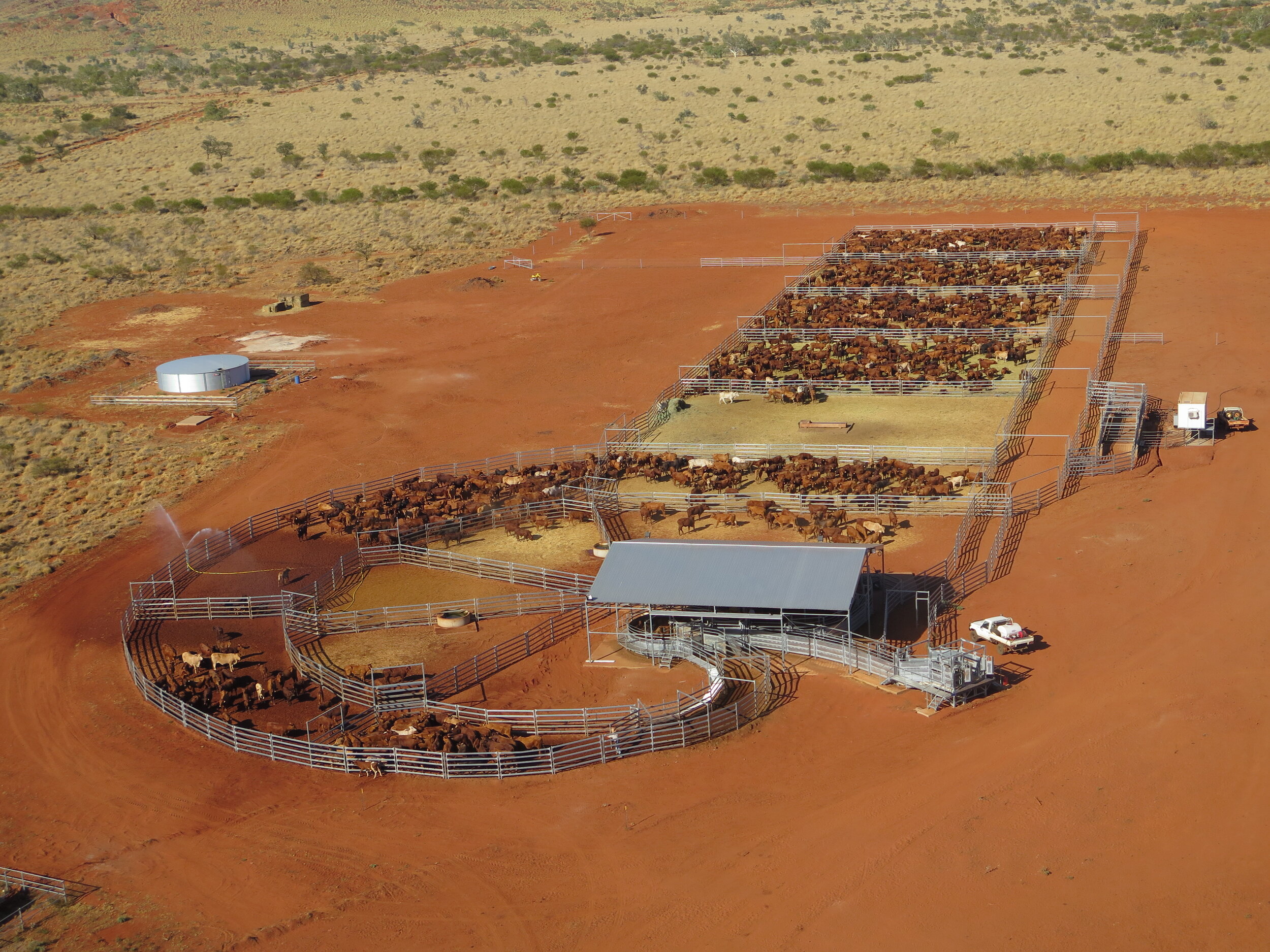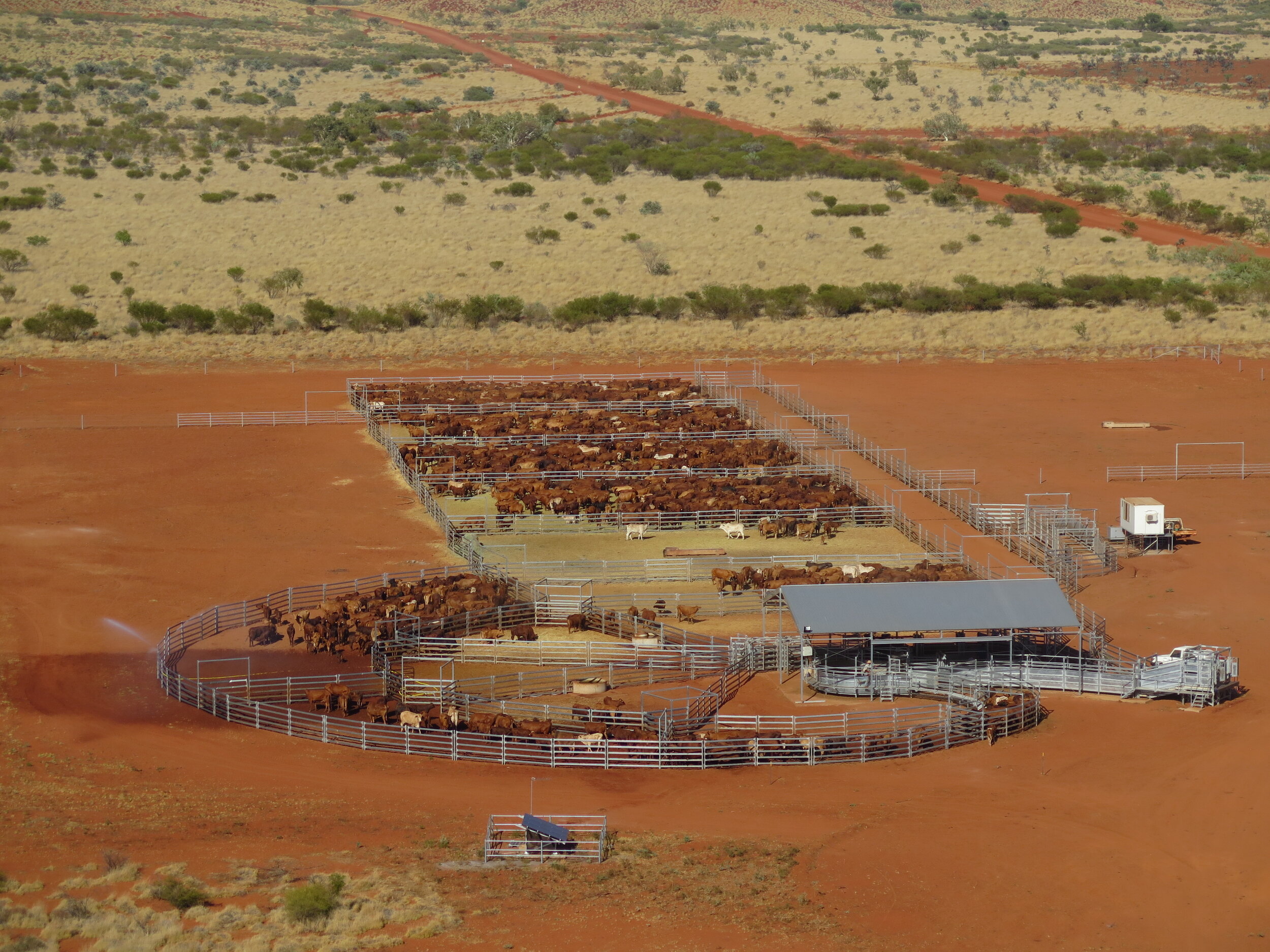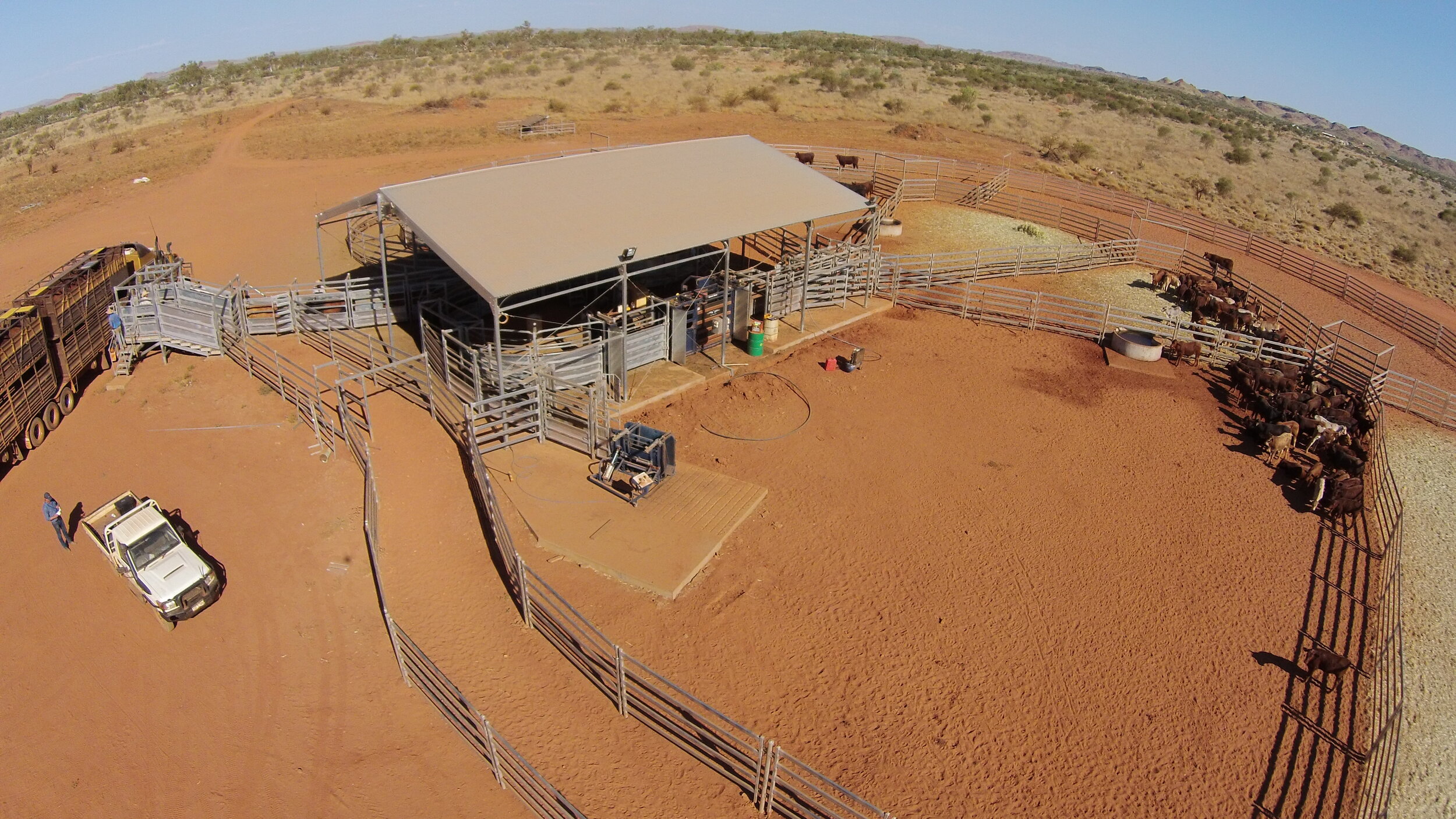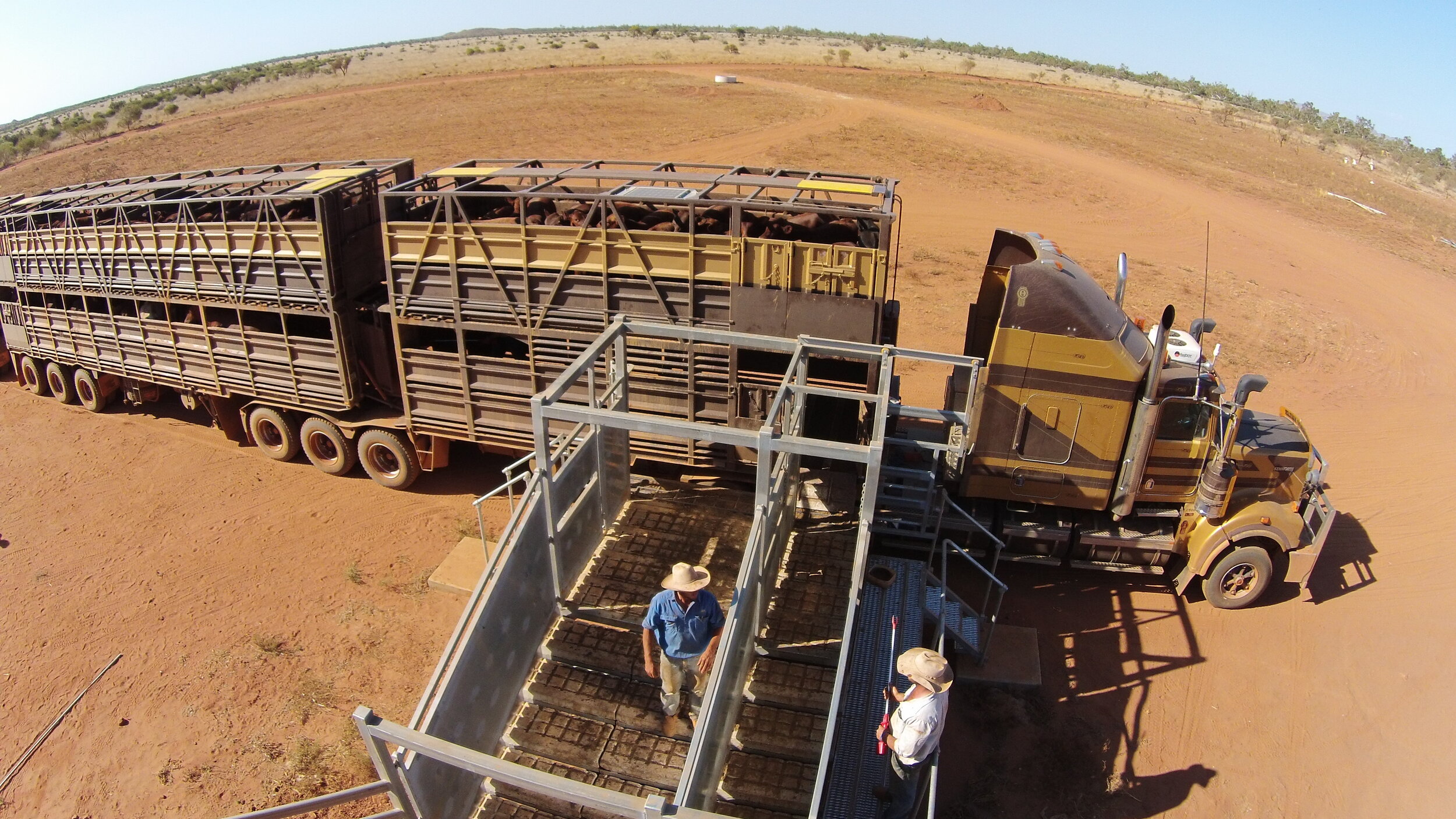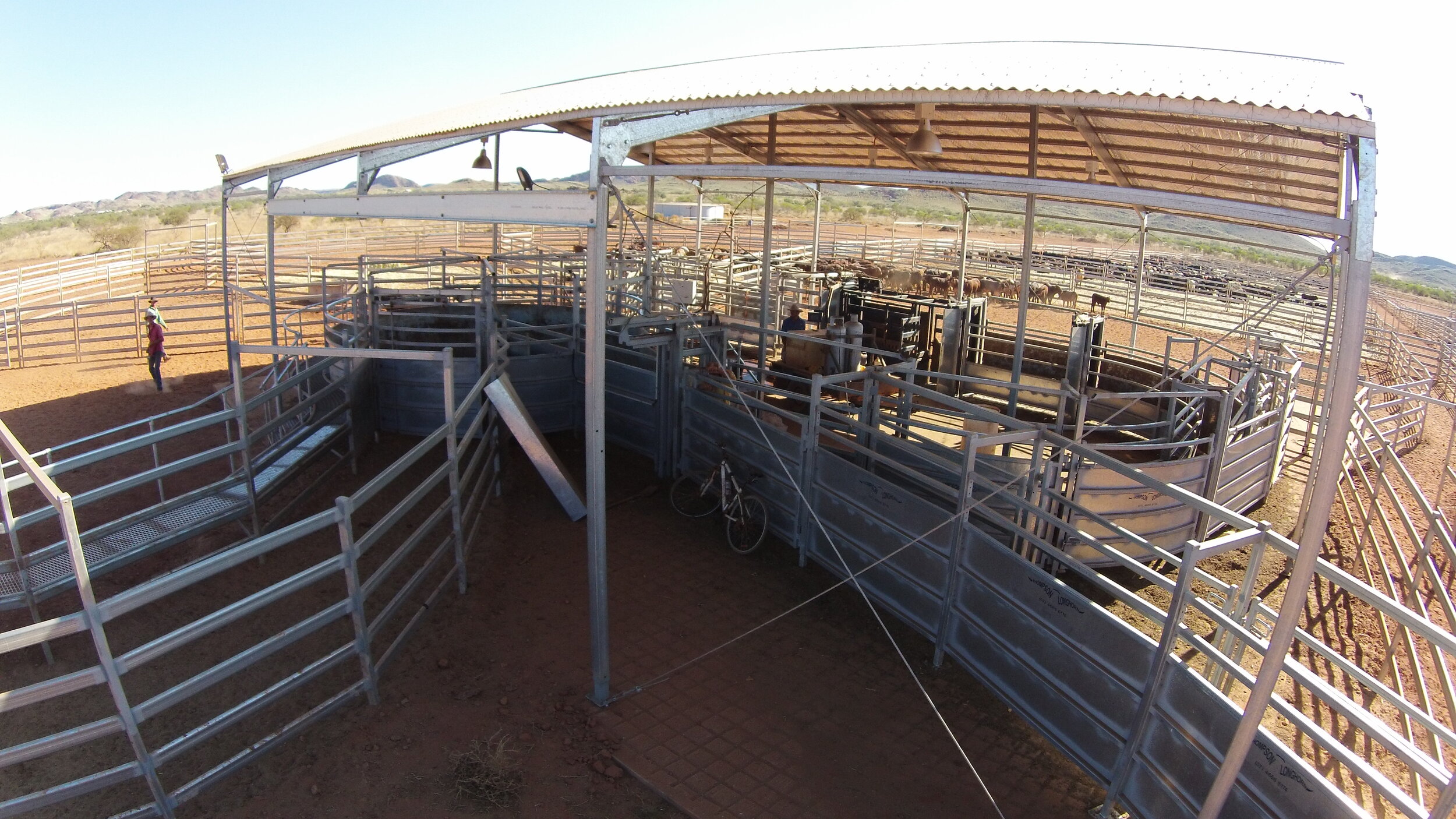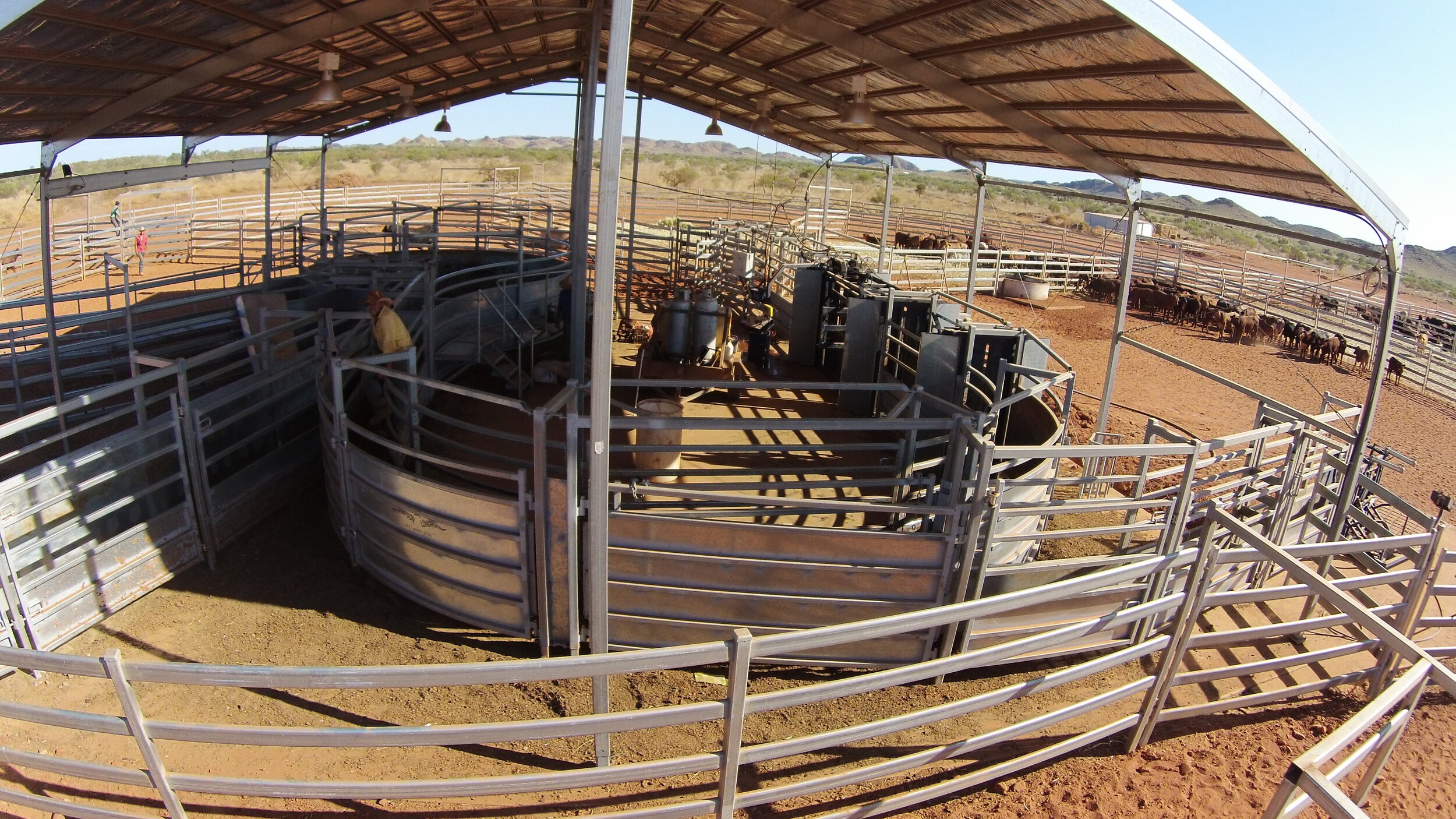Uaroo Station
In 2015, Andrew and Nicola Forrest's Minderoo Group commissioned Thompson Longhorn to design, fabricate and supply an automated handling facility and feed pens on a remote greenfield site at its Uaroo Station near Onslow, in WA's Pilbara region. The station is currently being managed with neighbouring Nanutarra Station under Minderoo South.
The main working yards cover about 6000 square metres and five feed pens cover about 7200 square metres. A major challenge was that the yards would be located in a particularly remote part of WA, which made trucking in prefabricated materials and equipment and a long process from the Thompson Longhorn factory in SEQ.
The project consists of a processing facility, spelling yard, point of sale for Minderoo cattle and a transit yard where local producers will be able to spell, re-hydrate and weigh cattle destined for the Harvey Beef abattoir. "The project also incorporates feeding facilities and a trade certified weigh-bridge that has the capacity to weigh up to 20 tonnes of live cattle at a time," Byron Wolff.
To help with increased efficiency in processing individual cattle an automated weighing and sorting system was built into the core operating centre. Cattle are processed through the race and crush and sorted into weight groups automatically, with limited human intervention, leaving a full record of individual animals and the weights they are sorted into. The restrainer used in this system is the Monarch, with a pneumatic head scoop.
A pneumatic weaner cradle is attached through a weaner lane which comes from the crowding yard in the core centre. This is used when processing calves and weaners for ear tagging, castrating, dehorning and branding.
Safety and animal welfare were integral factors in the yard's design. In order to limit human-animal contact in high-pressure areas, cattle enter the processing area through a fully sheeted bugle which is divided into three sections by pneumatic gates. The bugle is surrounded by a catwalk for personnel access and directs the cattle into the 360° pneumatic crowding yard. By doing so the operator safety is greatly improved as they are not in compromising situations if cattle turn around or push back against a gate while an operator is closing it from within the yard. The processing area was also designed to minimise bruise points, which could occur in other designs when there were sharp bends in races or other factors that mean stock can not move through smoothly.
The lane for the loading ramp comes off the crowding yard breakaway gate so the bugle and crowding yard are utilised in the process to provide a consistent flow of cattle and cattle can be easily divided into decks. The loading ramp itself consists of a single deck ramp with a dump ramp, this allows for quick unloading of cattle.
